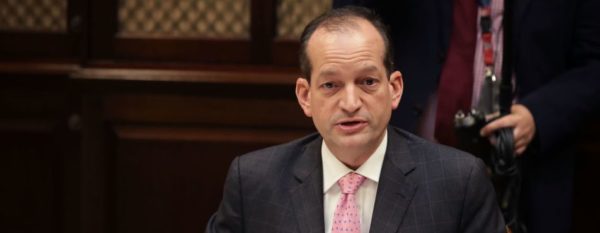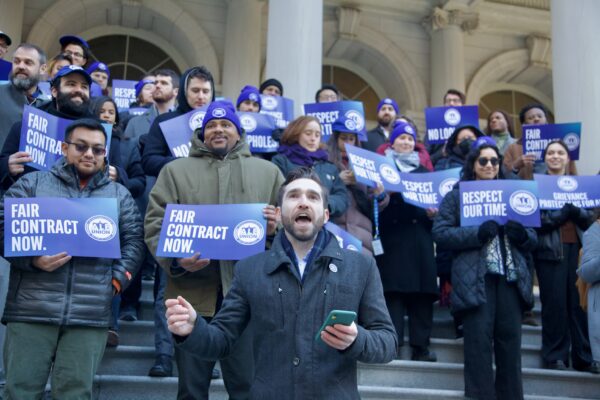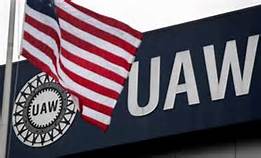WASHINGTON—The Labor Department on March 7 announced a proposed rule that would raise the level of pay below which employers have to pay salaried workers extra for putting in overtime—but to more than $12,000 a year less than where the Obama administration set it in 2016.

The department’s proposal would require workers otherwise exempt because they’re doing managerial or professional jobs to get paid time-and-a-half for overtime if they make less than $35,308 a year or $679 per week. That’s a significant increase over the current standard of $23,660 a year or $455 a week, set in 2004 and largely unchanged since 1975. But the Obama rule, issued by the Labor Department in 2016 but blocked by a federal court in East Texas later that year, set the threshold at $913 a week, $47,476 per year.
The Labor Department said the rule “would make more than a million more American workers eligible for overtime.” “At my confirmation hearings, I committed to an update of the 2004 overtime threshold, and today’s proposal would bring common sense, consistency, and higher wages to working Americans,” Secretary Alexander Acosta said in a statement.
“The adoption of this new rule would leave behind millions of workers who would have gotten overtime protections under the 2016 guidelines,” responded Heidi Shierholz, who worked on the rule as chief economist at the Labor Department during the Obama administration, and is now policy director at the Economic Policy Institute. She estimated that “well over half of the workers who would have gotten new or strengthened overtime protections under the 2016 rule would be left behind.”
“Employers who recall the feeling of panic when the Obama administration issued its Final Rule doubling the salary basis threshold in May 2016 will breathe a sigh of relief over the much smaller increase proposed by the Department of Labor yesterday,” Ryan E. Mick, an attorney with a Minneapolis employer-side law firm, said in a statement.
The salary-threshold rule is intended to cover workers who would be exempt from overtime pay because they are in supervisory or intellectual decision-making roles, but whose salaries are well below “professional” levels, such as fast-food restaurant managers. In 2016, the Labor Department estimated that raising the threshold to $913 a week would enable 4.2 million more workers to get paid for overtime—about 35% of full-time salaried employees, up from the 7% eligible under the 2004 rule.
The 2016 rule “was by no means overly expansive,” Shierholz wrote. In 1975, she said, more than 60% of full-time salaried workers were entitled to overtime pay. “If the rule had simply been adjusted for inflation since 1975, today it would be over $55,000,” she added.
Alaska, California, and New York have set their own thresholds above $40,000.
The Labor Department proposal also does not index the salary threshold to inflation, which the Obama administration’s rule would have. It would also let employers count bonuses toward the threshold. Once the rule is published in the Federal Register, the public will have 60 days to submit comments.
The Obama overtime rule never went into effect. A group of 21 states led by Nevada Attorney General Adam Laxalt, who called it “federal overreach,” sued to block it, joined by 20 other states. In November 2016, federal District Judge Amos Mazzant issued an injunction stopping it, saying that the department had set the threshold so high that it “will effectively eliminate the duties test.” In November 2017, the U.S. Court of Appeals for the Fifth Circuit decided to hold off on hearing an appeal while the Labor Department was developing a rule revising the threshold.
The “duties test” in federal labor law exempts workers from being paid overtime if they supervise at least two or more full-time employees or their equivalent, have the authority to hire or fire other employees, or their primary duty includes the exercise of discretion and independent judgment with respect to matters of significance. But Labor Department regulations established immediately after the Fair Labor Standards Act was enacted in 1938 also set a salary threshold for the exemption.
“The inclusion of a salary test in the regulations is of great assistance in making a ready separation between such nonexempt employees and the bona fide professional employees whose professional status is recognized by the salary paid,” Labor Department official Harold Stein wrote in a 1940 report.
In other words, EPI Vice President Ross Eisenbrey wrote in November 2016, the salary test “is not just a tool for weeding out employees who, for example, don’t do the work of engineers or architects or radio announcers; it is an independent measure of whether the employee has sufficient status and prestige to protect him or herself from abusively long hours without adequate compensation.”



